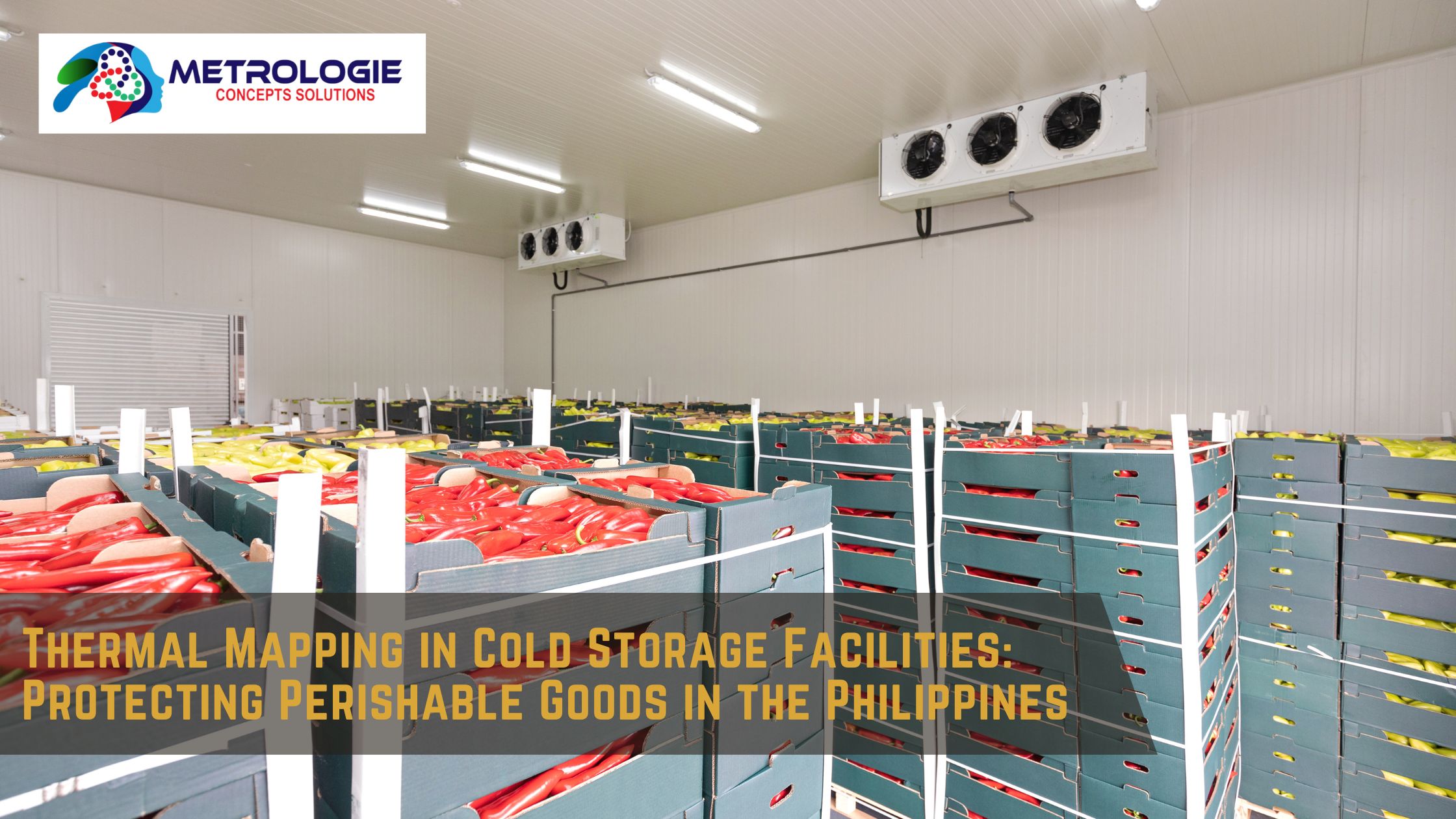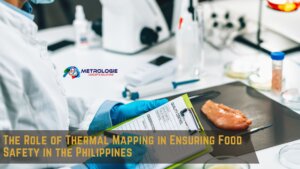Introduction
In a country like the Philippines, where tropical climates can present a constant challenge to preserving perishable goods, cold storage facilities play a critical role in maintaining food safety, extending the shelf life of products, and ensuring that medicines and other sensitive goods remain effective. However, even the best-designed cold storage facilities can experience temperature fluctuations, which is why thermal mapping is essential.
Thermal mapping involves assessing the temperature distribution in a storage facility to ensure that every corner, shelf, and pallet maintains the required temperature. This process is vital for identifying any inconsistencies or “hot spots” that may compromise the integrity of the stored products. It is a crucial step for businesses operating in industries such as food and beverage, pharmaceuticals, and biotechnology, where maintaining the right temperature range is non-negotiable.
In this article, we’ll explore the importance of thermal mapping in cold storage facilities, how it helps protect perishable goods in the Philippines, and what businesses can do to prepare for and implement thermal mapping solutions effectively.
1. The Role of Cold Storage in the Philippines
a. The Importance of Cold Storage for Perishable Goods
The Philippines is home to a tropical climate with high humidity and temperatures that can reach extreme levels. This creates challenges for industries reliant on maintaining the quality of perishable goods, such as fresh produce, dairy products, seafood, and pharmaceutical products. Cold storage facilities provide the necessary environment to preserve the quality and safety of these goods by controlling temperature and humidity levels.
b. Industries that Rely on Cold Storage
Several industries in the Philippines rely heavily on cold storage:
- Food and Beverage: This includes the storage of fresh fruits, vegetables, meat, poultry, seafood, and dairy products.
- Pharmaceuticals: Vaccines, medicines, and biological materials require controlled environments to maintain their effectiveness.
- Agriculture: Exported goods like bananas, pineapples, and other fruits are stored in cold storage to ensure they reach international markets in pristine condition.
- Biotechnology and Healthcare: Biological samples, tissues, and certain chemicals must be stored in cold environments to remain viable.
Without reliable cold storage, products can spoil, leading to financial losses, regulatory issues, and compromised public health.
2. What is Thermal Mapping?
a. Understanding the Concept of Thermal Mapping
Thermal mapping refers to the process of monitoring and mapping out the temperature distribution within a cold storage facility. The aim is to ensure that the temperature is consistently maintained across the entire storage area, preventing fluctuations that could harm perishable goods.
Thermal mapping uses temperature sensors strategically placed throughout the storage area to gather data on temperature patterns. This data is then analyzed to create a comprehensive “thermal map” that highlights any problematic areas, such as warm spots, cold spots, or areas with significant temperature variations.
b. The Need for Consistency in Temperature Control
While cold storage facilities are designed to maintain a uniform temperature, factors such as air circulation, door openings, placement of products, and equipment performance can cause variations in temperature throughout the space. Even minor temperature fluctuations can affect the quality and safety of perishable goods.
For instance, frozen goods that experience temperature spikes may suffer from freezer burn or partial thawing, leading to degradation in quality. On the other hand, temperature-sensitive pharmaceuticals could lose their effectiveness if stored outside the required temperature range.
Thermal mapping helps identify these inconsistencies and ensures that every part of the storage facility maintains the correct temperature, thereby protecting the stored goods.
3. Why is Thermal Mapping Important for Cold Storage Facilities?
a. Ensuring Compliance with Regulations
In the Philippines, industries such as food and pharmaceuticals are subject to stringent regulations governing temperature control. Good Manufacturing Practices (GMP) and Hazard Analysis and Critical Control Points (HACCP) standards require businesses to maintain strict temperature controls to ensure the safety and quality of their products. Failing to comply with these standards can lead to fines, product recalls, and reputational damage.
Thermal mapping is a key element in meeting these regulatory requirements. By documenting the temperature conditions within a facility, businesses can provide evidence of compliance during audits or inspections. This is particularly important for companies that export goods to countries with strict food safety regulations.
b. Preventing Spoilage and Financial Loss
Temperature-sensitive products, such as food and pharmaceuticals, can spoil if stored outside the required temperature range, leading to significant financial losses. Thermal mapping minimizes the risk of spoilage by ensuring that temperature is consistently maintained across the entire storage facility.
For example, a cold storage facility storing seafood may experience temperature fluctuations in certain areas due to improper air circulation or equipment malfunctions. Thermal mapping can identify these problem areas, allowing the facility to make adjustments before the products are compromised.
c. Optimizing Storage Efficiency
Thermal mapping can also help improve the overall efficiency of a cold storage facility. By identifying areas where temperature control is suboptimal, businesses can rearrange their storage layout, adjust air circulation systems, or upgrade equipment to ensure that all products are stored in optimal conditions.
This can lead to improved product quality, longer shelf life, and reduced waste. It also helps businesses make better use of their available storage space, maximizing the capacity of their facility.
4. How Thermal Mapping Works in Cold Storage Facilities
a. Planning the Thermal Mapping Process
The first step in thermal mapping is to plan the process carefully. This involves:
- Identifying critical areas: These are the areas of the facility where temperature control is most important, such as near doors, vents, or large product loads.
- Determining sensor placement: Temperature sensors must be placed strategically throughout the facility to provide an accurate representation of temperature distribution. Common placements include corners, high and low areas, and around critical product zones.
- Establishing the monitoring period: The duration of the thermal mapping study can vary depending on the facility’s size, product type, and operational schedule. Monitoring for at least 24 hours is typical, but longer studies may be required for larger or more complex facilities.
b. Collecting Temperature Data
Once the thermal mapping plan is in place, temperature sensors are installed and begin collecting data. These sensors continuously monitor temperature and record data over a set period.
The data collected includes:
- Average temperature readings: The overall temperature distribution across the facility.
- Temperature fluctuations: Identifying when and where temperatures deviate from the set range.
- Maximum and minimum temperatures: Recording the highest and lowest temperatures during the monitoring period.
c. Analyzing the Data
After the data collection period, the information is analyzed to create a comprehensive thermal map of the facility. This map shows the temperature distribution throughout the storage area, highlighting any areas where temperatures are outside the acceptable range.
The analysis may reveal “hot spots” where temperatures are higher than expected or “cold spots” where temperatures are lower. It can also identify areas with significant temperature fluctuations, which could indicate issues with air circulation or equipment performance.
d. Taking Corrective Action
Based on the results of the thermal mapping study, businesses can take corrective action to address any temperature inconsistencies. This might involve:
- Adjusting air circulation systems: Ensuring that cold air is distributed evenly throughout the facility.
- Rearranging product placement: Moving products to areas with more stable temperature conditions.
- Upgrading or repairing equipment: Addressing issues with refrigeration units, vents, or insulation.
5. Key Considerations for Thermal Mapping in the Philippines
a. Climate Challenges in the Philippines
The Philippines’ tropical climate presents unique challenges for cold storage facilities. High humidity, frequent temperature changes, and the potential for typhoons and power outages mean that maintaining consistent temperature control can be difficult.
Thermal mapping can help businesses in the Philippines address these challenges by identifying areas where climate conditions may affect temperature stability and recommending solutions to mitigate these risks.
b. Energy Efficiency
Cold storage facilities consume a significant amount of energy to maintain the required temperatures. However, temperature inconsistencies can lead to higher energy consumption as refrigeration units work harder to compensate for fluctuations.
Thermal mapping can help optimize energy use by identifying areas where refrigeration systems may be overcompensating due to poor air circulation or insulation. By addressing these issues, businesses can reduce energy consumption and lower their operational costs.
c. Compliance with Local and International Standards
In addition to local regulations, businesses that export perishable goods to other countries must comply with international standards for temperature control. Thermal mapping ensures that cold storage facilities in the Philippines meet these standards, helping businesses avoid delays or rejections at international borders.
6. How to Prepare for a Thermal Mapping Study
a. Evaluate Your Cold Storage Facility
Before beginning a thermal mapping study, it’s important to evaluate your facility’s current performance. This includes assessing:
- Airflow: Ensure that air is circulating properly throughout the storage area.
- Equipment performance: Check refrigeration units, insulation, and temperature control systems for any issues.
- Product placement: Ensure that products are not blocking air vents or stacked in a way that restricts airflow.
b. Work with a Trusted Thermal Mapping Provider
To ensure the accuracy and effectiveness of your thermal mapping study, work with an experienced provider like Premier Physic Metrologie. Their team of experts has extensive experience conducting thermal mapping in cold storage facilities and can provide valuable insights into optimizing your temperature control systems.
c. Plan for Regular Monitoring
Thermal mapping should not be a one-time process. As your cold storage facility changes over time – whether due to new equipment, increased product loads, or other factors – it’s important to conduct regular thermal mapping studies to ensure that temperature control remains consistent.
Conclusion
In the Philippines, where maintaining the quality and safety of perishable goods is a constant challenge, thermal mapping is an essential tool for cold storage facilities. By identifying temperature inconsistencies, optimizing airflow, and ensuring compliance with local and international standards, thermal mapping helps businesses protect their products and reduce the risk of spoilage.
Partnering with a trusted provider like Premier Physic Metrologie ensures that your thermal mapping study is conducted accurately and efficiently, giving you confidence in your cold storage facility’s performance. By investing in regular thermal mapping, businesses can safeguard their products, reduce waste, and remain competitive in the demanding industries of food, pharmaceuticals, and biotechnology.




